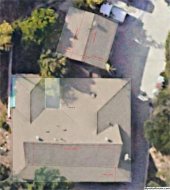Thanks for such great advice folks!
The electrical contractor I used for my meter/main upgrade referred me to one of his NEC graduates (contractor teaches NEC at local community college) and making contact with him was very beneficial. Turns out he now works for a large solar company but takes on odd jobs on weekends. He is in a neighboring AHJ but has done some installs in our AHJ, I hired him this last week to come for a site visit and consulting to discuss local AHJ expectations and setbacks/code/etc. It was definitely worth the money. I have a much better grasp on what will be required in our AHJ. He indicated I am just overly worried. He is also willing to do the racking and module install and further consulting to help make sure I can get past permits/inspection. I feel much more confident about a DIY or sorta hybrid DIY now.
But to answer some of the questions and provide some content for future folks looking to do some sort of DIY within Los Angeles county:
We are in an eastern municipality within LA county so city is the AHJ but the city adopts LA code pretty much verbatim as well as California/NEC/NFPA/etc.
I've been exclusively using the
California Energy Commission list for choosing and reviewing various equipment assuming that if it's on the CEC list then it is Rule 21 compliant and UL-whatever as well. The consultant I hired also suggested I use the CEC list. Can anyone further confirm or refute that equipment on this list *should* be usable in at least the state of California?
@Shimmy - I will post an aerial if I can figure out how to include it.
What are your current setbacks from the property line? Is your home sprinklered? Is the garage? How much (if any) battery do you want? How much PV? Do you have any shading? Is the garage on your street or an alley (front/back)?
Is permitting done through the county or your municipality? Outside of Santa Monica and the City of LA most building departments are pretty accessible if you want to ask specific questions related to your proposed install. Roof setbacks are one of those things that generally have a lot of local flexibility.
Garage and house is setback maybe 15 - 30 feet from property lines. Neither home or garage is sprinklered. Garage is detached, unfinished and unoccupied. Our plans are ~45kWh for storage. Garage PV is ~7kW, house PV planned is ~7kW (house solar to be done in mid/late 2024, yea second set of plans/permits). Have some tree shading however we already have a licensed arborist ready to trim/remove trees and shading as needed. Garage is in rear of home. Permitting is local municipality. I suppose they are too large to get answers from them. I've called 3 times, no return call. I've emailed twice, no reply.
Also we are not in a HOA nor LADWP, we are SCE.
Yes, Sol-Ark is on my list of potential hybrid inverters. Of course the EG4, LuxPower and Megarevo are also on it. The Schneider XW Pro would be the preferred equipment but when we move everything to all electric in 2025 we would need 3 of the XW Pro units vs 2 of the hybrid units so it's probably not going to be our choice. The SolarEdge SE11400H-US is on my list but seems to only have 1 tracker so I'm not certain how useful that will be with 3 strings facing different directions (NE, SW, S). Further I'm not certain how well or flexible the SolarEdge is with zero export or self consumption. The hybrids seem to have at least 3 trackers.
RSS: After reading more here on the forums, some further code research and discussing with my consultant I have a good grasp of what to do now with RSS, not overly concerned about it any longer and yea the MLPE cost is not a concern.
I realize this isn't really too wise but we are planning to do our solar installation in two stages, detached garage now with ~7kW and ~15kWh storage not tied to grid or house at all (completely off-grid) and then in mid 2024 resubmit plans for adding PV only to the house to connect to existing inverter and increase storage. This is due to pretty old roofs on both that need re-roof and deck repairs and some FHA home improvement grants/loans that become available in 2024.
Also the detached garage now has the meter/main (house originally had meter/main with no power to garage), meter location approved by SCE and just passed AHJ inspection last week, trenched to a house subpanel. Garage now also has it's own subpanel. 3 ground rods, bonded between structures, connected to water main, etc.
Thanks again for all the guidance folks!
Here are a couple aerials:






